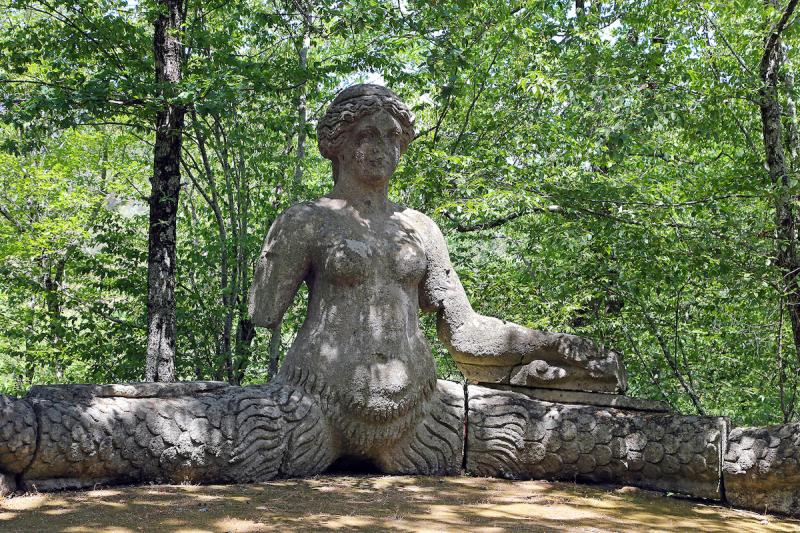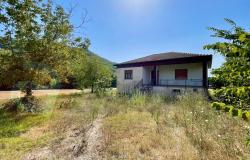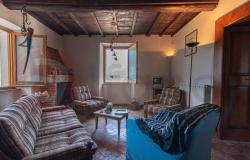Michelangelo was the mind behind the mythological dreamscape that draws thousands of visitors to the Monster Park of Bomarzo near Viterbo each year, an Italian scholar believes.
The park of weird giants, dragons, three-headed dogs, mythological heroes, hellsmouths and crazy tilting houses was conceived by the Renaissance genius and built by some of the most trusted members of his workshop, Rome University art historian Enrico Guidoni believes.
Guidoni's theory, which overturns 500 years of research, is that "there was a division of labour in which Michelangelo framed the basic scheme and made suggestions for the artists, some of his best students, who carried out the major sculptoral work".
The Italian academic has put his theory into a book, The Sacred Grove of Bomarzo In European Culture, which has just been published in Italy.
"Sacred Grove" was what the patron of Bomarzo, the hunchbacked art-lover and former condottiere Pier Francesco ('Vicino') Orsini, called the fabulous and grotesque fairyland he created in memory of his young wife.
From the 16th century onwards, most historians have cited another major artist, the architect Pirro Ligorio - who finished off St.Peter's after Michelangelo died and designed the famous Villa D'Este at Tivoli - as the author of Bomarzo.
Guidoni is convinced that this is a mistake based on a combination of the fact that Ligorio was Michelangelo's successor and the generally low estimation Bomarzo's statues have had in the art world.
"In fact, the larger-than-life statues, some sculpted into the very bedrock, show Michelangelo's imagination had a playful side, giving Mannerism a jolt of the surreal," he claimed.
Like many Mannerist works of art, Bomarzo's symbolism is arcane: examples are a large sculpture of one of Hannibal's war elephants, which mangles a Roman legionary, or a statue of Earth goddess Ceres lounging on the bare ground, with a vase of greenery perched on her head.
The many monstrous statues appear to have been strewn almost randomly about the area, 'sol per sfogare il Core' ("just to let the heart pour out its feelings") as one inscription on the obelisks says.
Some believe the gardens were 'deliberately unplanned' as a foil to the perfect symmetry and layout of the great Renaissance gardens nearby at Villa Farnese and Villa Lante.
For almost three hundred years after its construction, the park was abandoned, becoming overgrown and neglected.
But in the 1970s a program of restoration was implemented by the Bettini family, and today the garden, which remains private property, is a major tourist attraction.
The surreal nature of what locals call the Parco dei Mostri appealed to great 20th-century artists Jean Cocteau and Salvador DalÃ, who discussed it at great length.
The story behind Bomarzo and the life of Pier Francesco Orsini are the subject of a fascinating novel by the Argentinian writer Manuel Mujica Lainez (1910-1984), Bomarzo (1962).
Mujica Lainez went on to write a libretto based on his novel, which was set to music by Alberto Ginastera in 1967.
The opera Bomarzo premiered in Washington in 1976.
It was banned by Argentina's military dictatorship, but Mujica Lainez and Ginastera were awarded the Pulitzer Prize.









